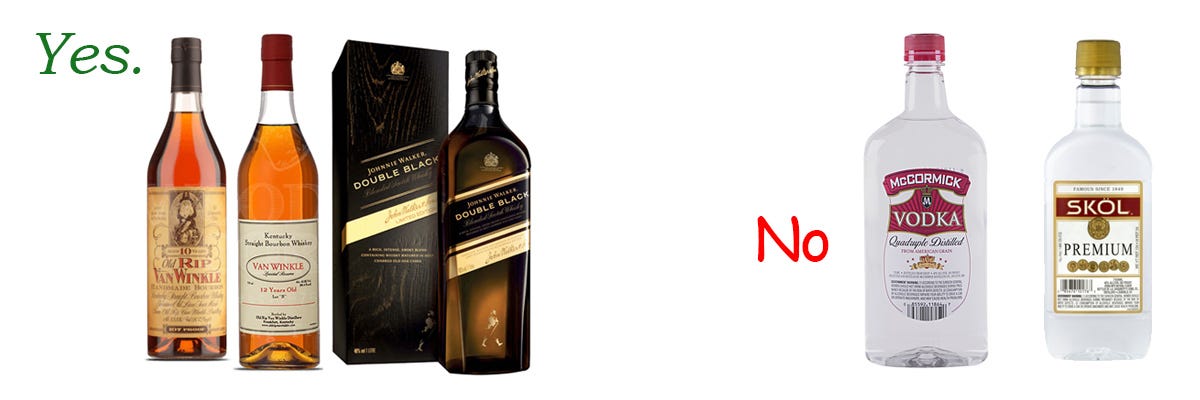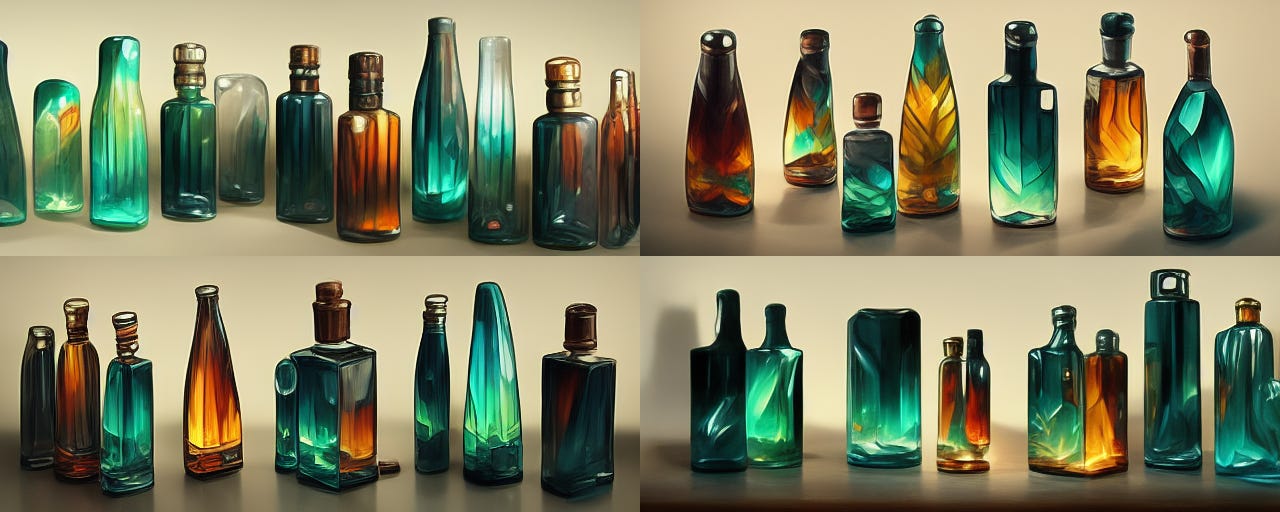Men's Fashion 204: Fragrances and Smells
An easy way to dial up personal style is to have a smell that’s “yours.”
An easy way to dial up personal style is to have a smell that’s “yours.” A couple of subtle fragrances that accentuates fits, and that people can identify you with. At the very least, you’ll want something special for special occasions.
No one really wants “default” scents like soap, shampoo, sweat, smoke, etc. (No, scented soap usually doesn’t count.)
Women particularly love scents, especially on men who look good, or ones they already like. An optional icing on an already impressive cake. It’s subjective though, and some women prefer natural smells over store-bought. There are zero one-size-fits-all recommendations here.
Side note: cologne, perfume, and fragrance are all interchangeable in modern language. There are differences, but it’s fine.
Buying Guide
Step one is to figure out what YOU like. There are different types of scents including citrus, smoke, wood, herbal, spice, etc. There are infinite combinations so it’s impossible to recommend any one thing. Cheaper colognes also don’t carry the scents well, so something which LOOKS appealing might instead smell like alcohol and desperation.
It’s important to not cheap out. There are situations where an inexpensive cologne smells good, but it’s not that common. Budget appropriately. $100-300 is reasonable. It’s like shopping for liquor; you can’t buy a plastic jug of vodka and expect it to taste like top-shelf whiskey.
Ask a woman to help you choose (wife, girlfriend, date, etc). But you can’t base your decisions solely on their opinion. You’ll be the one wearing the cologne in the first place, and spending the most time with it. Your preferences come first.
For example, I like darker earthy smells. Cedar, sandalwood, amber, bergamot, coffee or cocoa bean, etc. I wouldn’t use a cologne which smells like a combination of tulips, apples, and patchouli. My fiancée enjoys the sandalwood-based smells I use, which works out well. Plus, woody scents tend to be the most long-lasting, and often form a base for other scents.
The manufacturing process matters. A good fragrance changes slightly over the day. Different layers are revealed depending on how the fragrance is structured. There’s even a scent wheel. The mix of ingredients varies in volatility - certain smells evaporate more quickly.
Fragrances come in different concentrations. In general, from most concentrated and long-lasting to least:
Parfum (~10 hours)
Eau de Parfum (~8 hours)
Eau de Toilette (~4 hours)
Eau de Cologne (~2 hours)
Aftershave / Eau Fraîche (~1 hour at most)
Fragrance Application
The more intense your cologne is, the less you need to apply. Expensive fragrances aren’t actually that expensive, since a bottle should last a long time. More-concentrated ones have less alcohol and are better for your skin too. If you moisturize, use a scentless one so it doesn’t clash with cologne.
To apply cologne, simply spray it on your skin (upper body) and let it air dry. A little goes a long way. One or two spritzes is fine in each area. Test your colognes before wearing them in public. Confirm their strength to ensure you don’t overdo things. You might even change how far away you spray. Every nozzle is different and results in different concentrations/spreads. 4-6” away from your skin is most common.
If your fragrance isn’t the spray bottle type, then 1-3 drops onto your fingers, or use the dab stopper (varies by bottle). Try not to rub drops into your skin - keep it minimal.
Don’t spray your hair or clothes. Perfumes are built for skin. The upper body is most effective because that gets the most attention. Some people put cologne on their wrists, but since everyone uses hands so often, scents can quickly wear off. Lower body makes even less sense. No one’s going to be smelling your knees, bro.
Good areas include the shoulders, chest, and base of the neck (front or back). Some people advocate for mid/upper neck and behind the ears. You’ll rethink that if you accidentally spray into your mouth or ear canal.
Where to put fragrance can vary by location, activity, and personal preference. Experiment and see what works for you. Just keep locations at 3 max, in a line or pyramid shape to spread things out. Like 1 on each shoulder with 1 at the back of your neck. Or 1 below the Adam’s Apple with 1 mid-chest.
Specific Recommendations
As starting points:
Tom Ford Noir
Polo Black
Dior Fahrenheit
Tom Ford Tuscan Leather
Yves Saint Laurent Eau Fraiche
Tom Ford - Oud Wood
Tom Ford - Noir Extreme
Prada - L’Homme
Yves Saint Laurent - La Nuit De L’Homme
Maison Martin Margiela - Jazz Club
Viktor & Rolf - Spicebomb Extreme
Givenchy - Gentleman Réserve Privée
I’d also add Tom Ford Tobacco Vanille as a potential option.
This should be plenty of information to get started.
Conclusion
Historically, perfumes have been around for thousands of years. Ancient Egyptians had scented wax which melted in the sun, for instance. Don’t feel weird about looking into them. It’s something with an ROI.
Perfumes and colognes have interesting theories and chemistry behind the scenes. The complexity is similar to wine and liquor tastings, so I have no plans to cover literally everything. This is only an introduction.
Just remember that fragrances are not a substitute for good hygiene. They’re an added bonus to increase your perceived status in social situations.
For more information:
BowTiedCuda will have an upcoming Substack post on the topic.
BowTiedGrace has been posting on Twitter about perfumes recently.
Read the full series:
The Foundations: Men’s Fashion 101
Dress Codes and Style: Men’s Fashion 102
How To Choose Your Wardrobe Colors: Men’s Fashion 103
Introduction to Fit: Men’s Fashion 104
Introduction to Shoes: Men’s Fashion 201
Introduction to Watches: Men’s Fashion 202
Introduction to Accessories: Men’s Fashion 203
Introduction to Fragrances: Men’s Fashion 204 ←- you are here
Introduction to Hairstyles and Beards: Men’s Fashion 205





